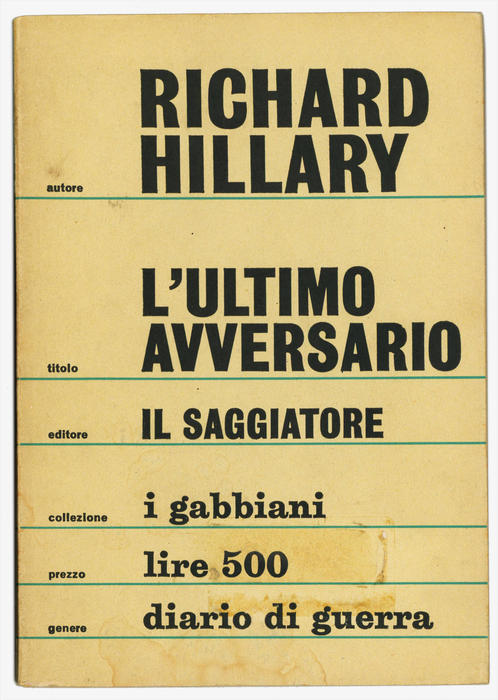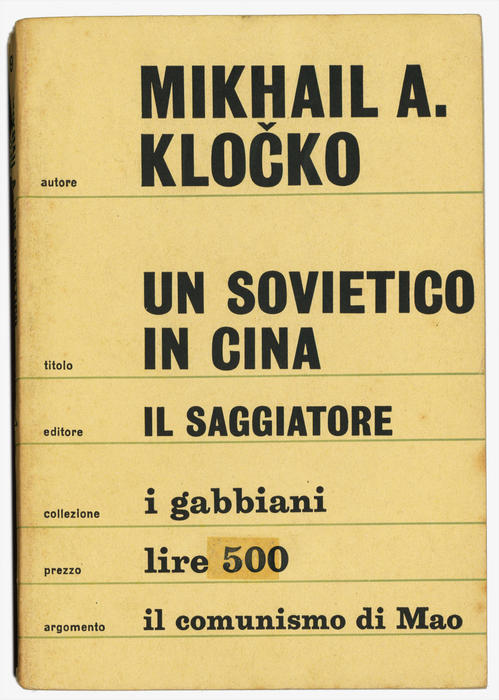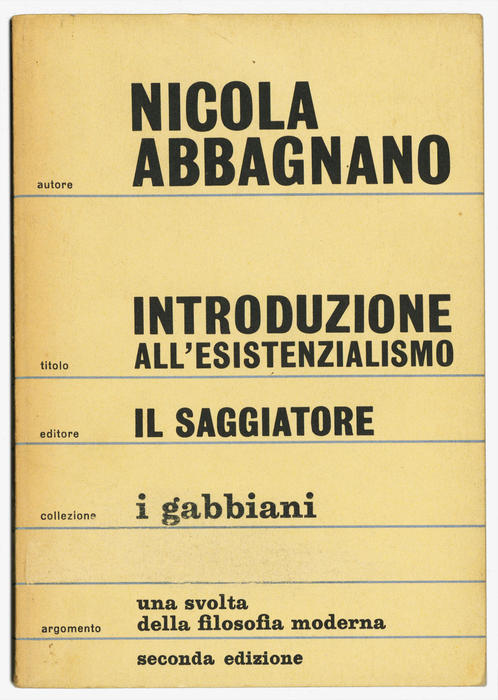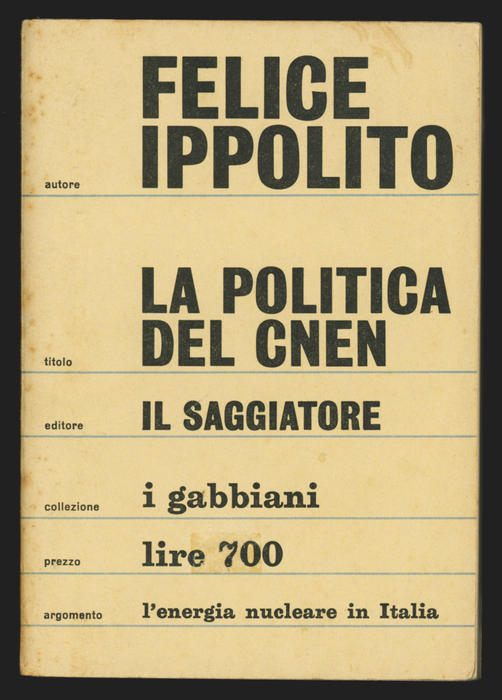Il Saggiatore. I Gabbiani
Anita Klinz, 1964
Part of Sezione Tascabili
"I Gabbiani (The seagulls), with their novelties and reprints, bring to everyone's reach the most complete collection of books that must be read or reread to be on par with modern culture and life." Born in 1964 as a widely distributed economic series, it inaugurated with Alfred Loisy's “Le origini del Cristianesimo” and was published until 1978.
The whole dust jacket, in a light gray, is divided into bands of 6 silver colored rulers. Each band contains information about the book: on the cover author, title, publisher, collection (name of the series), price and "topic"; on the back a biographical note on the author, a summary of the book and a description of the I Gabbiani series in addition to the repetition of price and topic. Author's name, title and publisher are set with Grotesque No.9 Bold, the intermediate texts are set with Egizio Bold (from the Nebiolo Foundries in Turin), the smaller paragraphs in Garamond. The black typography is broken only by the publishing house symbol in the center of the spine (in correspondence with the relative band). From the early 1970s, along with some slight changes in size, the cover texts became colored on a white background: yellow, blue, green, orange better suited to the pop influences of the period.
It should be noted that the price (very cheap for the average of the "economic" editions of the time) is brought to the fore, almost more important in terms of size than the name of the series - the book is now a market product, with a corporate identity precise, and a quantifiable value.

Richard Hillary, "L’ultimo avversario"
I Gabbiani 2, April 1964 (1a edizione)

Mikhail A. Kločko, "Un Sovietico in Cina"
I Gabbiani 9, July 1964 (1a edizione)

Arrigo Benedetti, "Paura all’alba"
I Gabbiani 19, April 1965 (1a edizione)

Giuseppe Raimondi, "Giuseppe in Italia"
I Gabbiani 21, May 1965 (1a edizione)

Nicola Abbagnano, "Introduzione all’esistenzialismo"
I Gabbiani 22, March 1967 (2a edizione)
Felice Ippolito, "La politica del CNEN"
I Gabbiani 28, September 1965 (1st edition)
Il Saggiatore
Publishing house founded "with the precise purpose of satisfying the requests and tastes of an intellectually modern public and gradually adapting our culture to the most advanced ones" by Alberto Mondadori in 1958, Arnoldo's son, at the time still had managerial duties in the house family publisher.
Many foreign authors are published in dozens of non-fiction series following the philosophy of “de-provincializing” and secularizing Italian culture. Among these, Simone de Beauvoir, Carlos Fuentes, Marcel Proust, Jean-Paul Sartre.
After the sudden death of Alberto Mondadori in 1976, Il Saggiatore remained independent until 1986, when it was absorbed into the Arnoldo Mondadori group. Thanks to the Formenton brothers, heirs of the founder, in 1993 the publishing house became independent and is still active today with the series “La Cultura” and “Le Silerchie”.
Anita Klinz
Born in 1925 in Opatija (at the time an Italian city, today in Croatia), she studied at the graphic art school in Prague and arrived in Milan after the war in search of work. She starts working for an advertising agency and then goes on to layout the advertisements for the magazine "Epoca". Here she meets Alberto Mondadori, with whom she will begin to participate in the design of the magazine itself. She was in charge of forming the Mondadori artistic office, she was then called upon to design the visual identity of the newly created Il Saggiatore publishing house. Among her most recognizable projects, the red porthole of the science fiction series "Urania" by Mondadori, later also adopted for the Gialli series. From the late 1970s, after a period in the Mondadori magazine division, she retired from the profession. She died in 2013.
